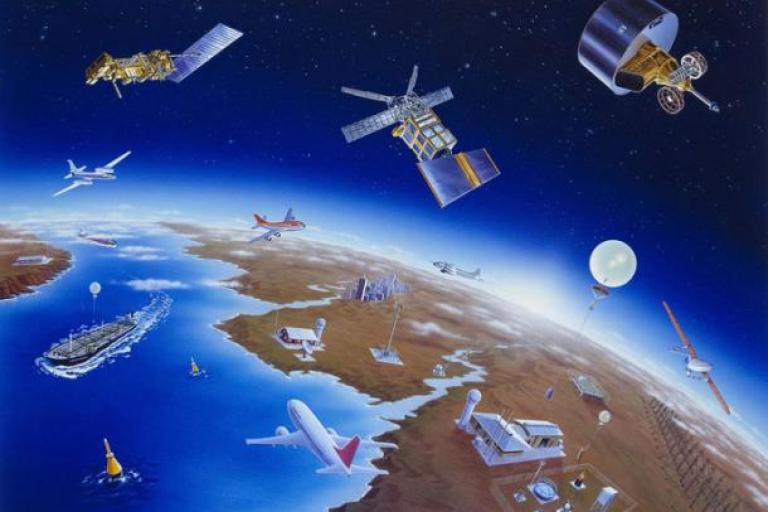WMO expresses concern about radio frequency decision
The World Meteorological Organization is concerned that the outcome of a major radiocommunication conference may have an adverse impact on future Earth observation satellite systems. The race to release 5G technology threatens to squeeze out other radio-frequency dependent technologies, including the world’s critical national severe weather early warning systems.

The World Meteorological Organization is concerned that the outcome of a major radiocommunication conference may have an adverse impact on future Earth observation satellite systems. The race to release 5G technology threatens to squeeze out other radio-frequency dependent technologies, including the world’s critical national severe weather early warning systems.
The World Radiocommunication Conference 2019 (WRC-19), attended by more than 160 nations, agreed on the allocation of bandwidths of the world’s radio spectrum. This is a limited resource because emerging technologies like 5 G mean demand is now over stripping the limited supply. The conference agreed to protect the microwave bands that support their life-saving severe weather early warning systems, but with time-limited provisions, which leaves the future of these systems uncertain.
“This WRC-19 decision has the potential to significantly degrade the accuracy of data collected in this frequency band which would jeopardize the operation of existing Earth observation satellite systems essential for all weather forecasting and warning activities of the national weather services,” said WMO Secretary-General Petteri Taalas in a written intervention to the conference organized by the International Telecommunications Union.
“Potential effects of this could be felt across multiple impact areas including aviation, shipping, agricultural meteorology and warning of extreme events as well as our common ability to monitor climate change in the future,” he said.
Severe weather early warning systems use a number of different technologies to gather and disseminate their critical information, which are dependent on access to specific radio spectrum bandwidths. The roll-out of 5G (officially known as IMT-2020), similarly dependent, threatens to limit the usability by meteorological observation systems around the world.
Specifically, the WRC-19 decision restricts 5G technologies from emitting noise in the 24GHz meteorological satellites observation frequency band below -33 dB(W/200MHz). That could lead to nearly 10 times more interfering out-of-band emissions than what WMO had recommended to allow. The decision specifies that:
- A limit of −39 dB(W/200 MHz) will apply to IMT base stations brought into use after 1 September 2027. This limit will not apply to IMT base stations which have been brought into use prior to this date. For those IMT base stations, the limit of −33 dB(W/200 MHz) will continue to apply after this date.
- A limit of −35 dB(W/200 MHz) will apply to IMT mobile stations brought into use after 1 September 2027. This limit will not apply to IMT mobile stations which have been brought into use prior to this date. For those IMT mobile stations, the limit of −29 dB(W/200 MHz) will continue to apply after this date
The risk, therefore, is that 5G could roll-out more quickly than initially anticipated, creating an unregulated increase in interference in the 24GHz the meteorological satellite observation frequency radio spectrum band.
WMO press release before WRC-19 is here
For more information about the meteorological satellite observation technologies is available in the report Satellites for Climate Services.

